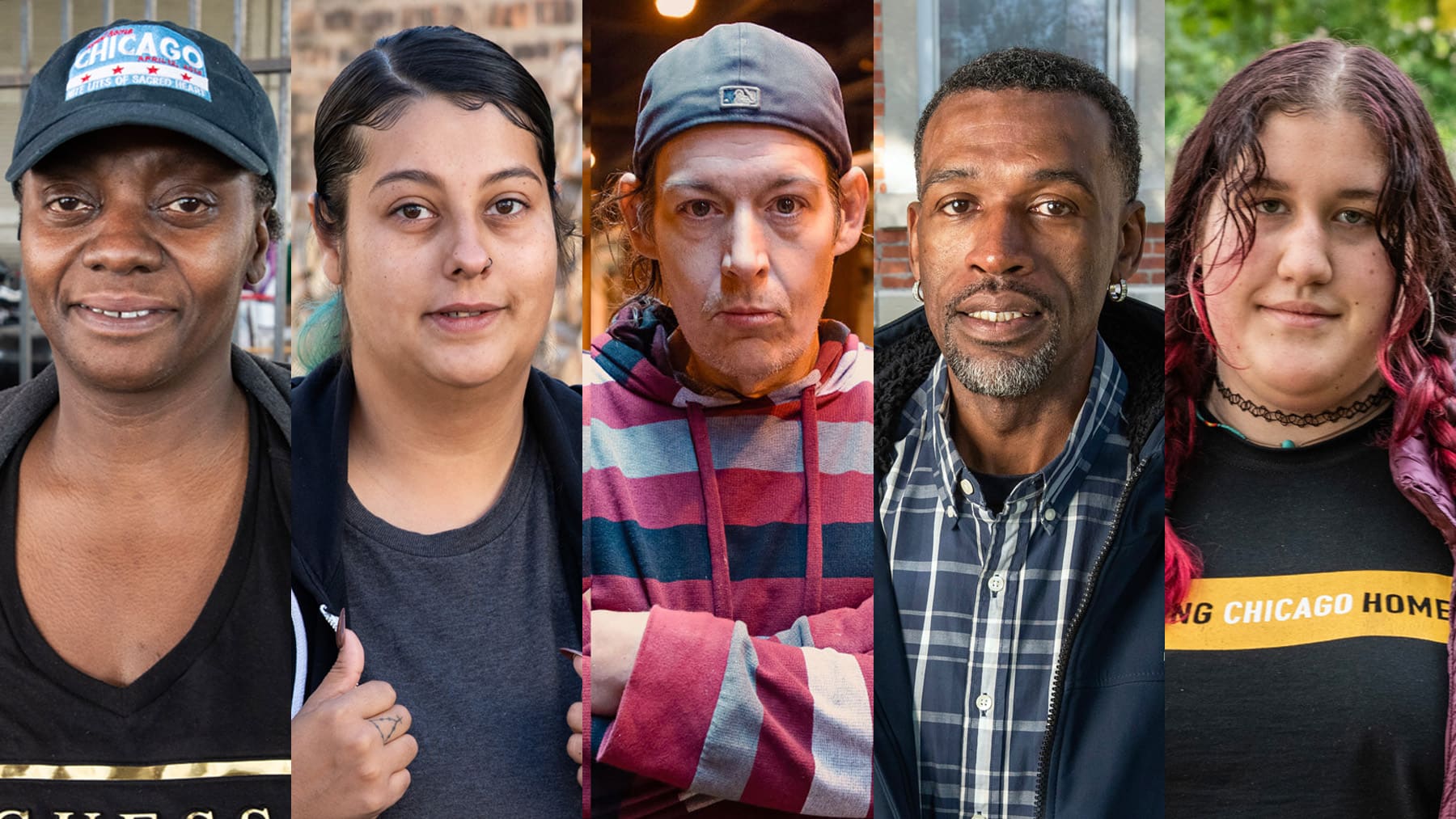Four walls with a door that locks. Sufficient heat and food. A place to be safe, to rest, and to live. Most of us take these essentials for granted but, on any given day, it is estimated that as many as 65,000 men, women, and children are currently experiencing homelessness on Chicago’s streets, in shelters, or while “couch surfing.” Many are suffering from mental health issues or addiction, and as a result, they may be estranged from family and friends. Without a fixed address, any rental or credit history, forms of identification, and other basic resources, jobs and stability can be unattainable.
“Housing is the foundation for stability and security for people,” says Nicole Bahena, Vice President of Community Partnerships at All Chicago, an organization dedicated to ending and preventing homelessness. “Without it, it’s difficult to keep up with anything else in life – taking care of yourself, finding and keeping a job, getting medical care, caring for your family.”
In a series of documentaries, Firsthand: Homeless will go beyond the stereotypes society often assigns to unhoused individuals through the firsthand perspectives of real people who are navigating its complexities and hardships. And through expert talks, news reporting, and conversations with thought leaders and community members, the project will explore possible solutions.
“When you’re homeless, you’re [just] surviving. There’s not much room to live.”
How do people find themselves homeless in Chicago, and how do they survive? Turns out, each person’s story is different.
Yolanda, grandmother of four, lives with her fiancé Clarence in a tent under the Damen Avenue bridge, in the shadow of a Costco and a block from the abandoned Lathrop Homes where she once lived and worked as a live-in aide to a man who later died, leaving her without a home. She grapples with health issues, including depression, and spends her days panhandling for loose change on the street above her head. Despite it all, Yolanda shares what she has with others and stays true to her faith. As she watches her young grandsons playing at the beach, she knows that she must keep going for them. “Just hold on and have faith,” she says, hopeful that better times are coming.
Dan is also living on the streets. Homeless for more than 12 years since his suburban home went through foreclosure, he now kills time by riding the L and walking around the city. He takes viewers on a tour of some of his regular downtown haunts, including the 11th floor stairwell of a public parking garage where he sleeps. He is surprisingly sanguine about his situation, but it’s clear that navigating life without a home is challenging. Avoiding crimes against the homeless and overcoming an ongoing heroin addiction are Dan’s immediate concerns, but his search for housing just might soon be successful.
At least Jackie has a roof over her head. She lives in a homeless shelter with two of her three young children – out of necessity, her youngest child is living with her ex-husband. She works part-time as a bus operator for a subcontractor for the University of Chicago, a long daily commute from across the city. Jackie is attempting to mend fences with her mother, who previously struggled with drug addiction – it was an altercation between them that landed her and the kids on the streets in the first place. She is hoping to be approved for an apartment for her family soon, which will afford them some freedom and privacy.
Brian feels fortunate to have obtained a transitional apartment at St. Andrew’s Court and a job through the CTA’s Second Chance program. He explains that he spent years moving in and out of the prison system and cites a lack of stable, affordable housing as a key reason why he kept reoffending. To give back, he also works with the Chicago Coalition for the Homeless on the city’s proposed Bring Chicago Home ordinance that is designed to help others in his situation.
Like Brian, Kimberly is also working to improve conditions for unhoused people. With her toddler Jasmine, she has been part of a transitional living program since the nursing school she had been attending pulled a large portion of her financial aid when she became pregnant. As she tackles several daunting mental health issues, she strives to make lives better for homeless youth – even heading to Washington, DC to lobby Congress – and dreams of a better life for Jasmine.
Throughout the upcoming year, get to know the stories of people across Chicago who are experiencing and addressing homelessness through five documentaries; four talks by community and thought leaders offering insights, context, and possible solutions; text, audio, and visual journalism; a companion discussion guide for schools, libraries, and community organizations; and, in partnership with The Night Ministry, All Chicago, and the Chicago Public Library, community conversations extending the reach of the project into the many neighborhoods across Chicago.


